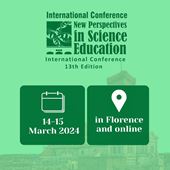Getting to know Science from Scientists
Lena Halbrügge, University of Potsdam (Germany)
Abstract
How large is the value of science for the society?
Very large if it is communicated comprehensibly for laymen.
By now there are many studies on how well people understand science communicated by scientists. But there are nearly no studies that show, which way is the best for scientists to talk about their research.
In this project we supported doctoral students of chemistry to communicate their science in a way laymen can understand and evaluated the different ways to see, which measure is the best for whom.
They were given three different possibilities to present their work and research.
The first option was to record a video in which they show their daily life at university both in labs and in offices and present what they do every day.
Moreover, they were able to take part at a pupils-campus-day where they did experiments related to their research together with the pupils. The third possibility was to present their research at a large night of science with around 10 000 visitors.
Afterwards the doctoral students participated in a qualitative as well as a quantitative survey mainly regarding their self-efficacy.
We were able to see that there are different types of science communicators and that these types have to be encouraged in different ways.
In this talk the three different ways of science communication of this project are presented. Furthermore, the results regarding the different science communication types are introduced [1].
|
Keywords |
Science Communication, Types of Communicators, Self-efficacy |
|
REFERENCES |
[1] 2024 Halbrügge, L., Banerji, A. (2024). Forschung verbreiten in Schule und Öffentlichkeit. Nachrichten aus der Chemie, 72(3), 19-22. |
 New Perspectives in Science Education
New Perspectives in Science Education





























